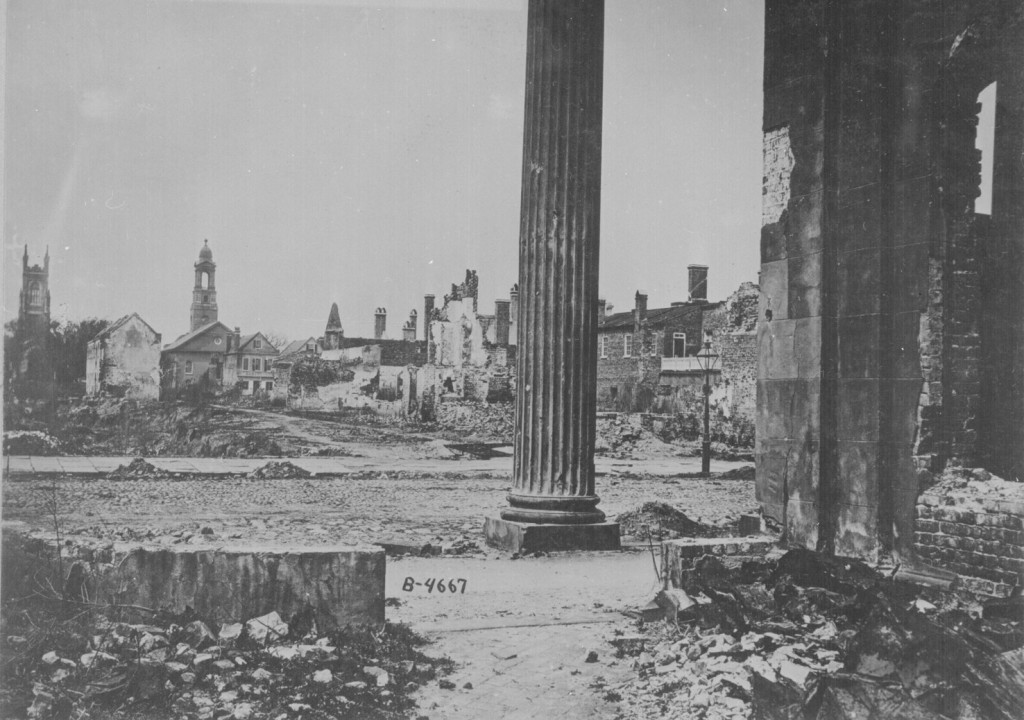
This image provided by the New-York Historical Society, shows Ulysses S. Grant, left, and Robert E. Lee at the end of the Civil War in an oil painting by Jean Leon Gerome Ferris titled "Let Us Have Peace, 1865." Grant and Lee met face-to-face only twice, the second time being when Union commander Grant accepted the surrender of Lee's battered Confederate army.
The Civil War was a turning point in American life. The North’s victory definitively shaped what would be the profile of the national elite. The war accelerated the process of industrialization and profoundly transformed the face of the nation.
The war was a social revolution, a collision of two ways of life, of two frames of mind. It subjugated the planter class inclined toward a traditional social order and imposed industrial capitalism as the socioeconomic regime that would determine the lifestyles of subsequent American elites. Above all, the war strongly influenced the formation of the human type that would become the model for future elites.
Overshadowing the war’s economic consequences was the demoralization of the prototypical planter, the dissolution of his lifestyle, and the disintegration of the power and influence of the traditional elites in the South. Jaher asserts:
“Old South patriciates encountered an abrupt disaster in the Civil War. Military tradition, the cavalier myth, determination to defend southern civilization, and elitist attitudes emphasizing special obligations to protect the social order, lead in battle, and face danger prompted bluebloods to volunteer for armed service…. A large portion of the gentry that might have provided leadership and sustained the class in subsequent decades disappeared in the prime of life. Aside from a high mortality rate, extensive property destruction as a result of the conflict being fought mostly in the South traumatized the upper class and prevented a postwar patrician restoration.”(1)
Despite the humiliation and other painful consequences of defeat, the customary deference to the old planter class persisted within local communities. “‘Every community,’ Union officer John DeForest noted in postwar South Carolina, ‘had its great man, or its little great man, around whom his fellow citizens gather when they want information, and to whose monologues they listen with a respect akin to humility.’”(2)
Notwithstanding local custom, however, the Southern traditional elites occupied a secondary position in relation to the Northern industrial and financial elites. “The Civil War strongly reinforced the power of the Northern aristocracy,” notes Miller, “and gave to the Northern elite a greater degree of national political power than it had hitherto enjoyed.”(3)
Victorious in the War, the North accelerated the drive toward industrial capitalism. The economic and social transformation of the United States into an industrialized nation dominated by urban and industrial elites of that region was already well under way before 1860, but it reached its height in the second half of the nineteenth century.
(1) Frederic Cople Jaher, The Urban Establishment: Upper Strata in Boston, New York, Charleston, Chicago and Los Angeles (Urbana, Ill.: University of Illinois Press, 1981), p. 398.
(2) George Brown Tindall, America: A Narrative History (New York: W. W. Norton & Company, 1984), Vol. 1, p. 715.
(3) Douglas T. Miller, Jacksonian Aristocracy: Class and Democracy in New York (New York: Oxford University Press, 1967), p. 180.
Plinio Corrêa de Oliveira, Nobility and Analogous Traditional Elites in the Allocutions of Pius XII: A Theme Illuminating American Social History (York, Penn.: The American Society for the Defense of Tradition, Family, and Property, 1993), Appendix I, pp. 301-302.














